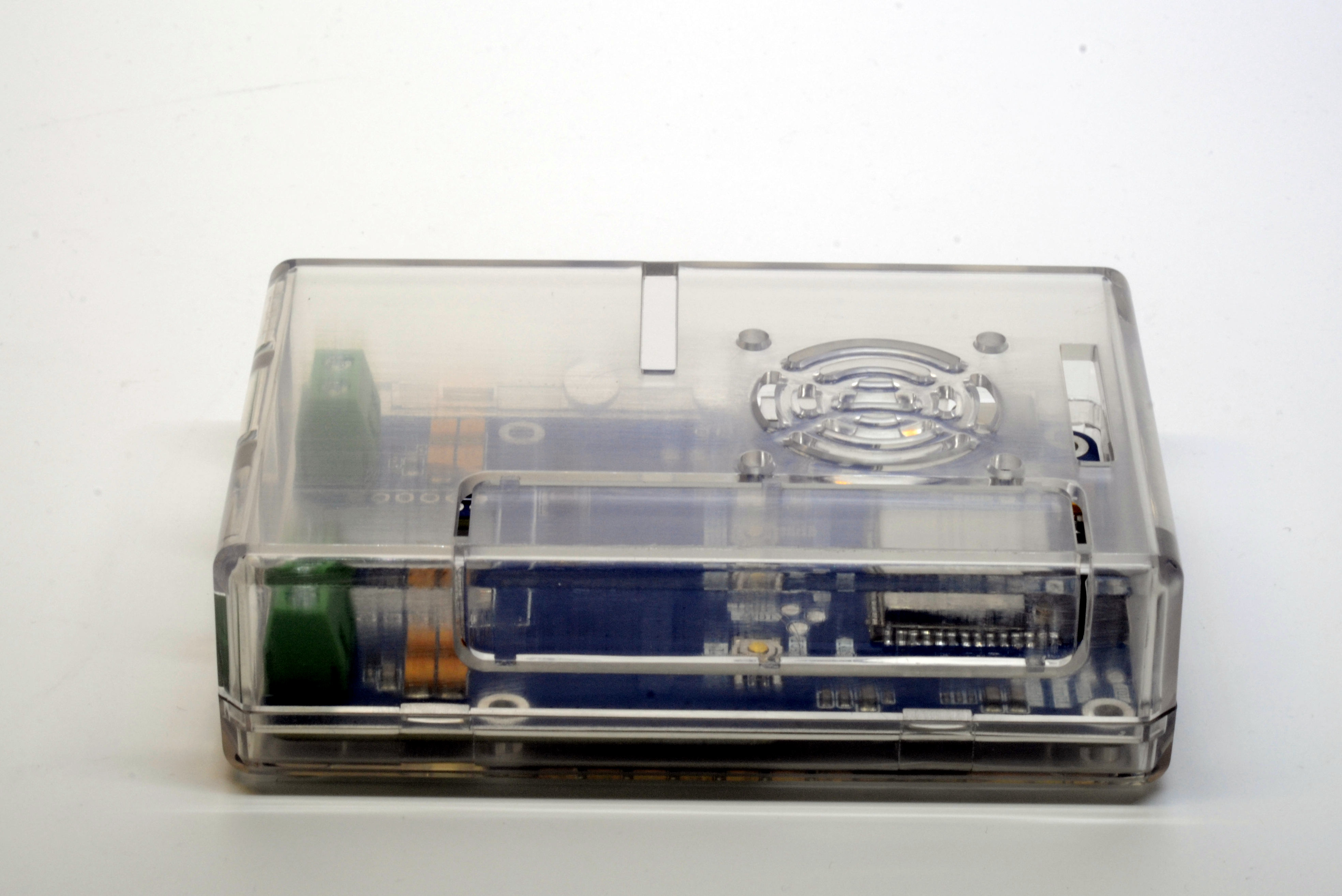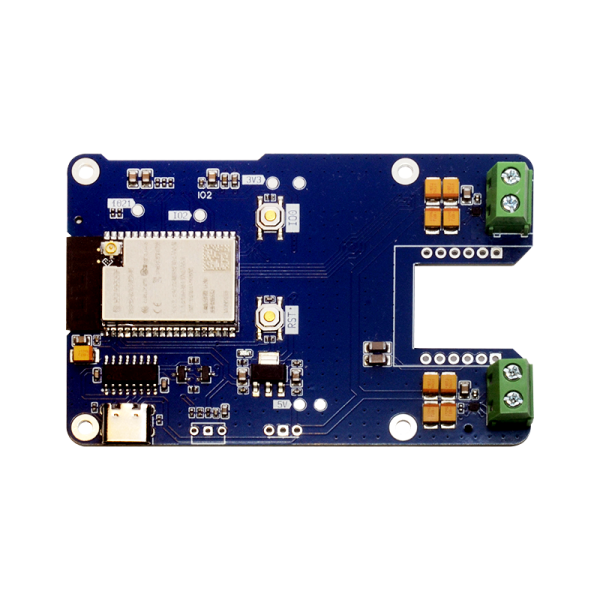Loud ESP32
- Buy 2 for $19.00 each and save 5%
- Buy 5 for $18.00 each and save 10%
- Buy 10 for $16.00 each and save 20%
Loud-ESP32 Audio combines ubiquitous ESP32 with a dual I2S DAC capable of delivering 5W of audio per channel. This combination provides your compact ESP32 module with the necessary memory and RAM capabilities to quickly develop Hi-Fi products.
What is it
Loud-ESP32 Audio combines ubiquitous ESP32 with a dual I2S DAC capable of delivering 5W of audio per channel. This combination provides your compact ESP32 module with the necessary memory and RAM capabilities to quickly develop Hi-Fi products.
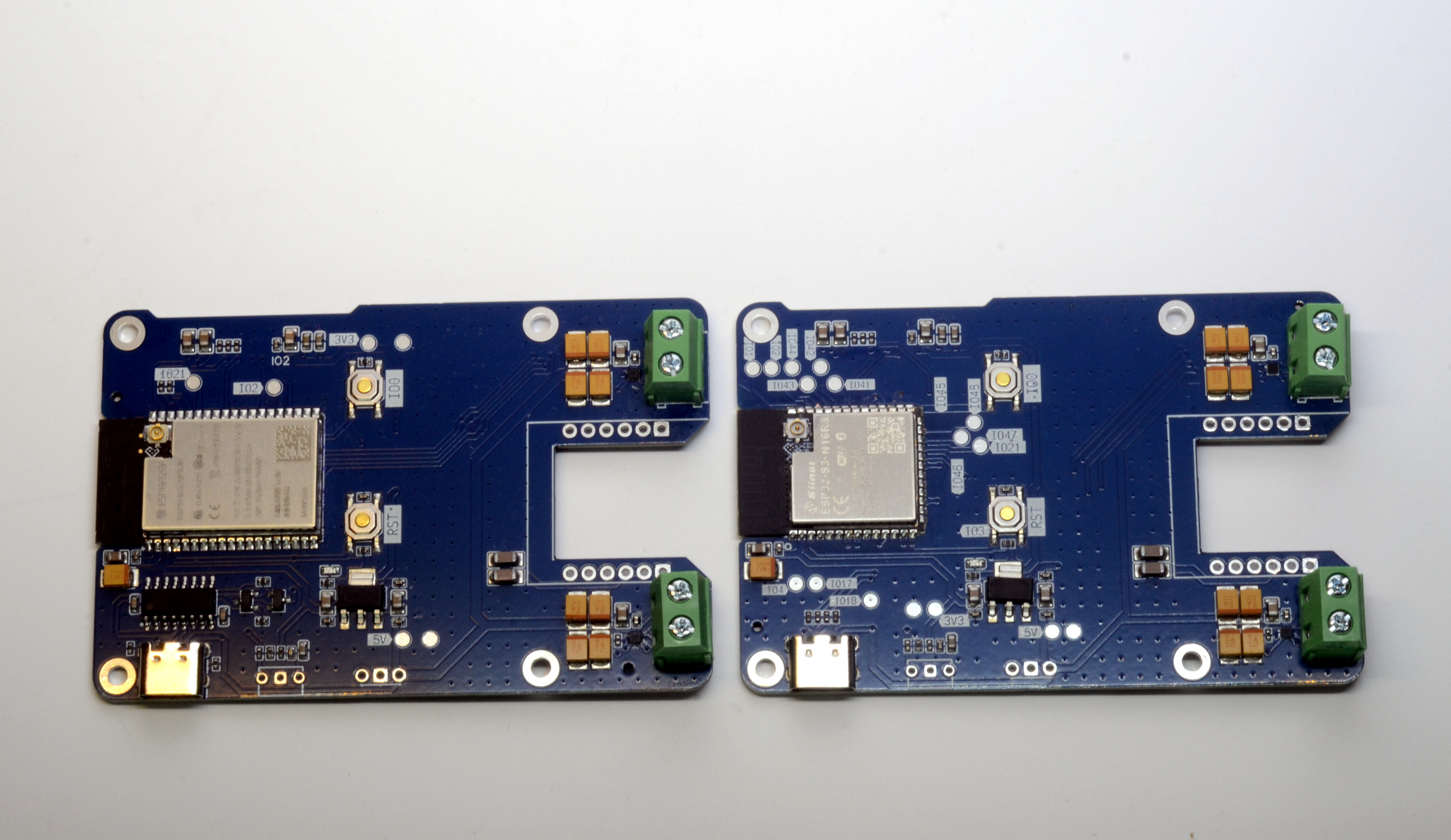
Motivation
I spent the last few years developing different solutions based on ESP devices. It all started with ESP8266, where CPU power is not really sufficient to do real-time decoding, so you're limited to a rather simple ding-dong business. Then ESP32 came, bringing two much more capable cores, so you have a powerhouse to handle communication and decoding at the same time. Perhaps most importantly it also came with SPIRAM, so you can do decent buffering (essential for streamed content). Now new ESP32 C-Series and S-Series chips are entering the market, and their potential is mostly unrealized as of today.
I created ESP32 Audio docks and subsequently development boards, to be able to quickly prototype for the whole range of ESP8266 and ESP32 chips, starting with the simplest finger-sized toys and going all the way up to full-sized speakers.
Recently I went a rabbit hole of Home Assistant integrations and discovered different ways ESP32 with a decent DAC can be integrated into complex Home setups.
Features
| HiFi-ESP32 | HiFi-ESP32S3 | Loud-ESP32 | Loud-ESP32S3 | Louder-ESP32 | Louder-ESP32S3 | |
|---|---|---|---|---|---|---|
 |
 |
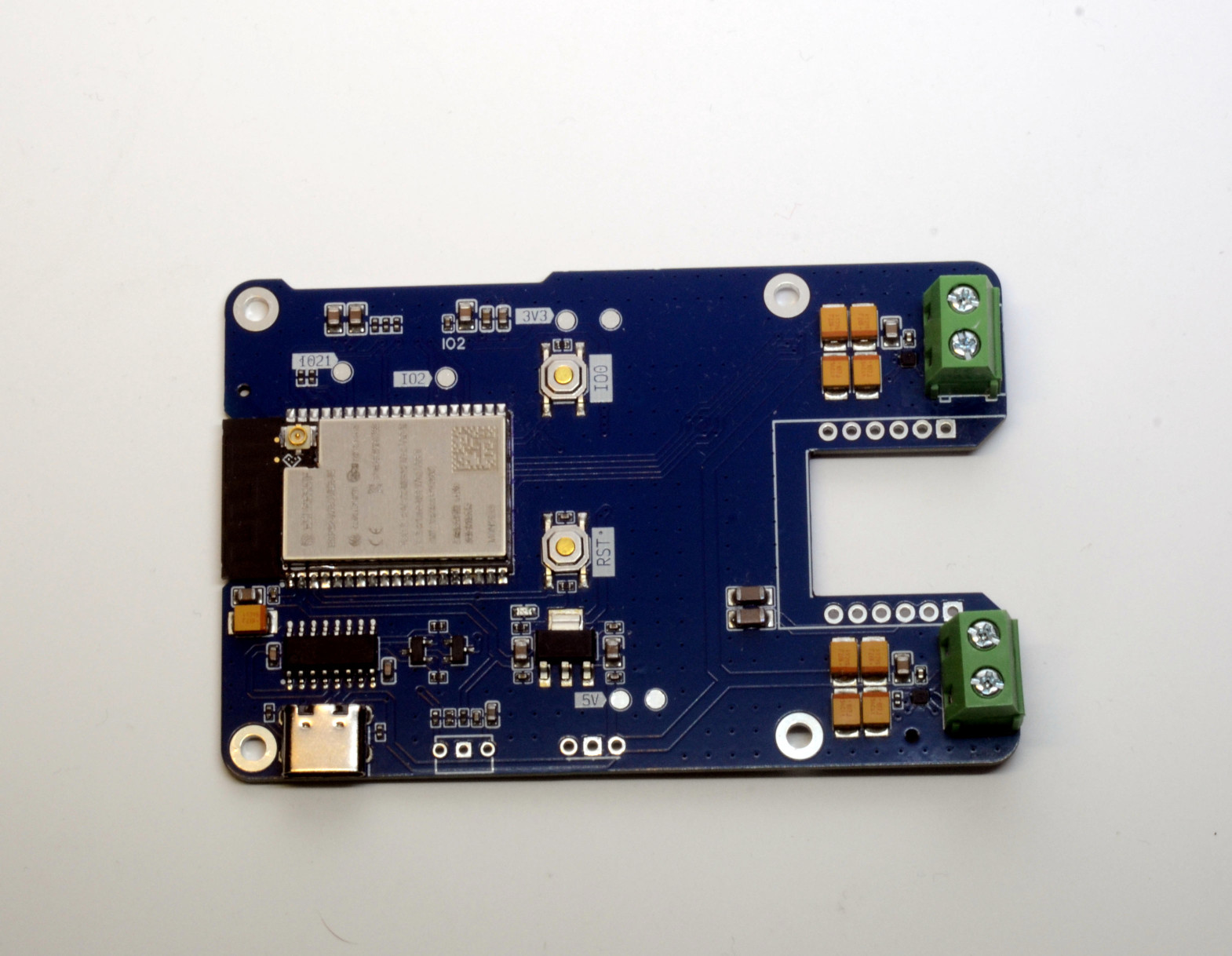 |
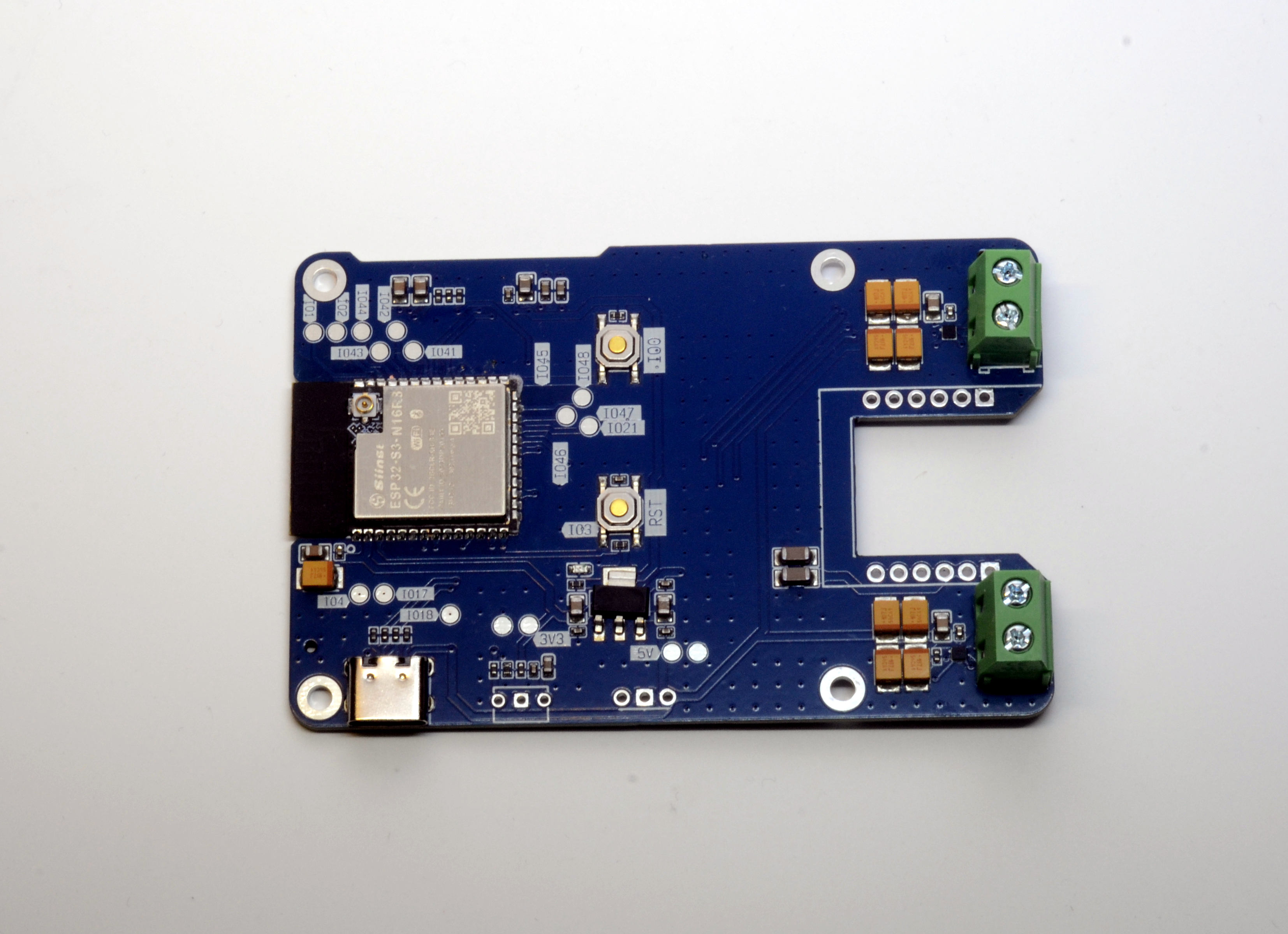 |
 |
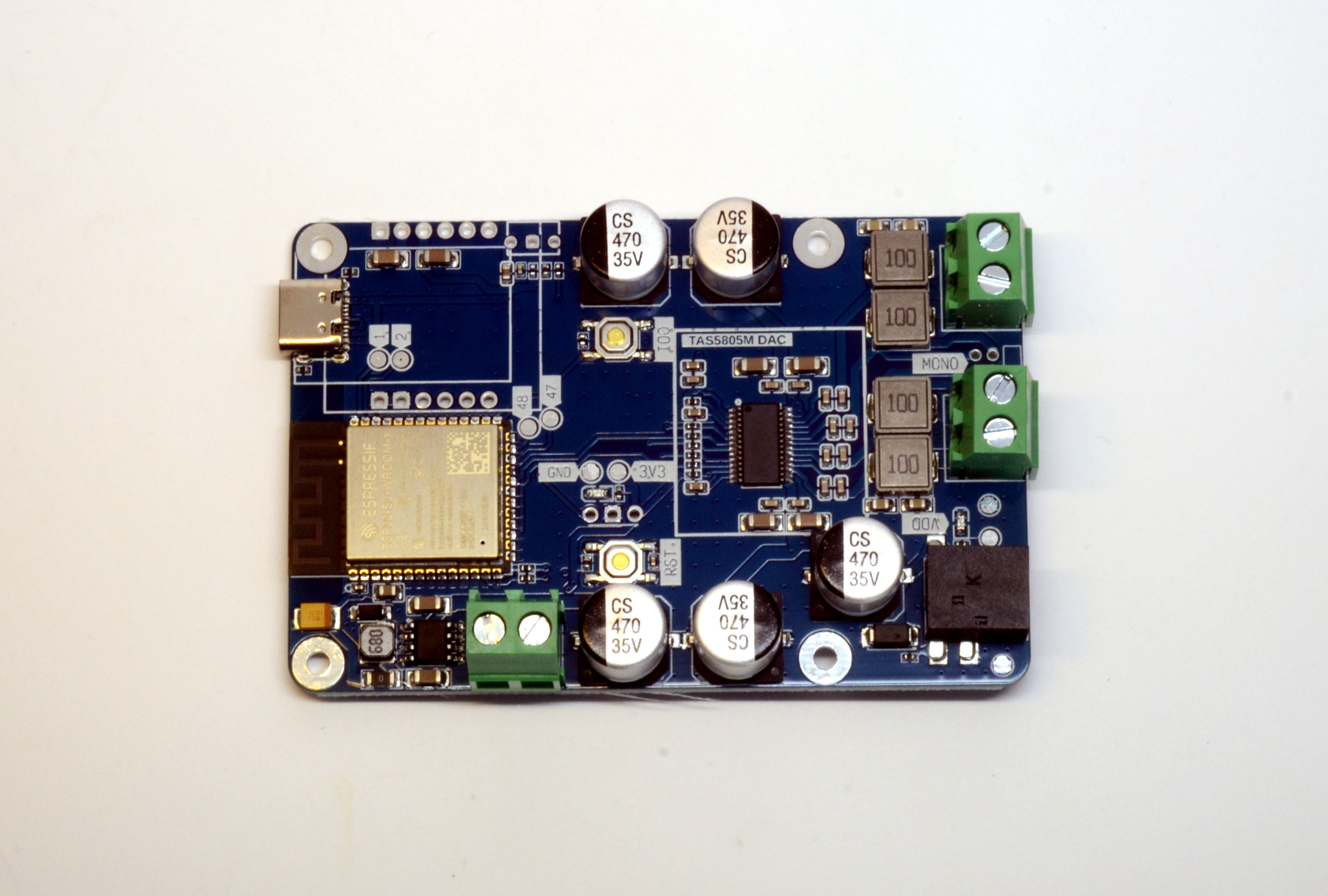 |
|
| MCU |
ESP32-WROVER-N8R8 |
ESP32-S3-WROOM-N8R8 |
ESP32-WROVER-N8R8 |
ESP32-S3-WROOM-N8R8 |
ESP32-WROVER-N16R8 |
ESP32-S3-WROOM-N8R8 |
| DAC | PCM5100A 32bit Stereo DAC -100 dB typical noise level | PCM5100A 32bit Stereo DAC -100 dB typical noise level | Dual I2S DAC (MAX98357) with built-in D-Class amp | Dual I2S DAC (MAX98357) with built-in D-Class amp | Stereo I2S DAC (TAS5805M) with built-in D-Class amp | Stereo I2S DAC (TAS5805M) with built-in D-Class amp |
| Output (4Ω) | Non-amplified stereo output, 2.1V RMS | Non-amplified stereo output, 2.1V RMS | 2x 5W | 2x 5W | 2x 32W (4Ω, 1% THD+N) | 2x 32W (4Ω, 1% THD+N) |
| Output (8Ω) | Non-amplified stereo output | Non-amplified stereo output | 2x 3W | 2x 3W | 2x 22W (8Ω, 1% THD+N) | 2x 22W (8Ω, 1% THD+N) |
| PSRAM | 8MB PSRAM (4MB usable) over 40MHz SPI | 8MB PSRAM over 80MHz QSPI | 8MB PSRAM (4MB usable) over 40MHz SPI | 8MB PSRAM over 80MHz QSPI | 8MB PSRAM (4MB usable) over 40MHz SPI | 8MB PSRAM over 80MHz QSPI |
| Power | 5V over USB-C, 2x LP5907 3.3 V Ultra-Low-Noise LDO for analog section | 5V over USB-C, 2x LP5907 3.3 V Ultra-Low-Noise LDO for analog section | 5V (up to 2.5A) from USB-C | 5V (up to 2.5A) from USB-C |
Up to 26V from external PSU 5V over USB-C with power limited to 2x5W |
Up to 26V from external PSU 5V over USB-C with power limited to 2x5W |
| Connectivity | WiFi + BT4.2 + BLE W5500 Ethernet (optional module) | WiFi + BLE W5500 Ethernet (optional module) | WiFi + BT4.2 + BLE W5500 Ethernet (optional module) | WiFi + BLE W5500 Ethernet (optional module) | WiFi + BT4.2 + BLE W5500 Ethernet (optional module) | WiFi + BLE W5500 Ethernet (optional module) |
Onboard PSRAM
Audio streaming requires proper buffering to work, even with ESP32 500K of RAM it is a challenging task. For that reason, most of the projects will require WROVER modules that have onboard PSRAM chips. All ESP32 Audio boards have an 8MB PSRAM chip onboard, connected via a high-speed interface. Any code using PSRAM with just work out-of-the box.
Board Pinout
Loud-ESP32
| I2S CLK | I2S DATA | I2S WS | PSRAM RESERVED | DAC EN | |
|---|---|---|---|---|---|
| ESP32 | 26 | 22 | 25 | 16, 17 | 13 |
| ESP32-S3 | 14 | 16 | 15 | 35, 36, 37 | 8 |
Ethernet
| SPI CLK | SPI MOSI | SPI MISO | SPI CS | SPI HOST/SPEED | ETH INT | ETH RST | |
|---|---|---|---|---|---|---|---|
| ESP32 | 18 | 23 | 19 | 05 | 2/20MHz | 35 | 14 |
| ESP32-S3 | 12 | 11 | 13 | 10 | SPI2/20MHz | 6 | 5 |
Optional peripheral
| IR IN | RGB OUT | OLED SPI HOST/SPEED | OLED SPI CLK | OLED SPI MOSI | OLED SPI MISO | OLED SPI CS | OLED SPI DC | OLED RST | |
|---|---|---|---|---|---|---|---|---|---|
| ESP32 | 39 | 12 | 2/20MHz | 18 | 23 | 19 | 15 | 4 | 32 |
| ESP32-S3 | 7 | 9 | SPI2/20MHz | 12 | 11 | 13 | 39 | (37) | 38 |
In the software section, two firmware examples are provided.
- esp32-i2s-bare is base I2S implementation based on ESP-IDF implementation directly.
- esp32-i2s-esp8266audio is based on excellent ESP8266Audio library (it works with the whole ESP range, don't get fooled by the name), providing minimum code implementation.
- esp32-i2s-web-radio is based on the same library, providing minimum web-readio stream player. It expects a playlist as an input in the 'data' folder.
Platformio IDE
All samples are provided as Plarformio IDE projects. After installing it, open the sample project. Select the proper environment based on your dock. Run the Build and Upload commands to install necessary tools and libraries, and build and upload the project to the board. Communication and proper upload method selection will be handled by IDE automatically.
Arduino IDE
Follow the ESP8266Audio library guide. Default settings will work out of the box with ESP8266 and ESP32 boards. For ESP32C3 and ESP32S2 board please adjust the pinout according to the above section
ESPHome and Home Assistant
Being an ESP32-based device, you can easily integrate it into your Home Assistant using ESPHome. Please find detailed instructions in the linked repo
Squeezelite-ESP32
Squeezelite-ESP32 is a multimedia software suite, that started as a renderer (or player) of LMS (Logitech Media Server). Now it is extended with
- Spotify over-the-air player using SpotifyConnect (thanks to cspot)
- AirPlay controller (iPhone, iTunes ...) and enjoy synchronization multiroom as well (although it's AirPlay 1 only)
- Traditional Bluetooth device (iPhone, Android)
And LMS itself
- Streams your local music and connects to all major online music providers (Spotify, Deezer, Tidal, Qobuz) using Logitech Media Server - a.k.a LMS with multi-room audio synchronization.
- LMS can be extended by numerous plugins and can be controlled using a Web browser or dedicated applications (iPhone, Android).
- It can also send audio to UPnP, Sonos, Chromecast, and AirPlay speakers/devices.
All ESP32-based boards are tested with Squeezelite-ESP32 software, which can be flashed using nothing but a web browser. You can use Squeezelite-ESP32 installer for that purpose. more details and setup instructions can be found here
Hardware
Please visit the hardware section for board schematics and PCB designs. Note that PCBs are shared as multi-layer PDFs.
| Image |
|---|
Optional SPI Ethernet module
Every board has a header that allows soldering in the W5500 SPI Ethernet module that is very easy to find. The only downside is that with the module installed, the board will not fit the case unless it is cut to accommodate extra height.
Case
HiFi-ESP32(S3), Loud-ESP32(S3) and Louder-ESP32(S3) are mechanically compatible with Raspberry Pi 3/4 cases, tested with transparent ones. Also, community members created a few 3-D printable designs that can be found here and here
